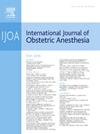人工智能(AI)聊天机器人在提供分娩硬膜外镇痛信息方面的有效性:我们做到了吗?
IF 2.6
3区 医学
Q2 ANESTHESIOLOGY
引用次数: 0
摘要
人工智能(AI)聊天机器人在医疗保健领域越来越受欢迎。他们理解和回答语言问题的能力使他们适合许多实际应用,从医疗建议到咨询。然而,人工智能聊天机器人提供有关分娩硬膜外镇痛的个性化复杂医疗信息的能力可能有限。在这篇社论中,我们重点介绍了我们期刊上最近发表的四篇文章的研究结果,这些研究与人工智能聊天机器人的使用及其在提供或加强分娩硬膜外镇痛的患者教育方面的有效性有关。有效性可以通过评估人工智能聊天机器人的准确性、可读性、完整性、情感和整体质量来衡量。虽然人工智能聊天机器人是很有前途的患者教育工具,但研究表明,它们可能会提供不完整或不准确的回答。根据现有麻醉学会和协会的指导方针,需要制定标准来评估医疗严谨性和用户对聊天机器人生成的反应的理解,以确保优化患者教育。本文章由计算机程序翻译,如有差异,请以英文原文为准。
Effectiveness of artificial intelligence (AI) chatbots in providing labor epidural analgesia information: are we there yet?
Artificial intelligence (AI) chatbots have gained popularity in healthcare. Their ability to understand and respond to language queries make them suitable for many practical applications ranging from medical advice to counselling. However, AI chatbots’ ability to provide personalized complex medical information about labor epidural analgesia may be limited. In this Editorial, we highlight findings from four recent publications in our Journal related to the use of AI chatbots and their effectiveness to provide or enhance patient education on labor epidural analgesia. Effectiveness can be measured by evaluating AI chatbots’ accuracy, readability, completeness, sentiment, and overall quality. While AI chatbots are promising tools for patient education, studies show that they may provide incomplete or inaccurate responses. Based on existing anesthesia societies and associations' guidelines, developing standards to assess the medical rigor and users’ comprehension of chatbot-generated responses is needed to ensure optimized patient education.
求助全文
通过发布文献求助,成功后即可免费获取论文全文。
去求助
来源期刊
CiteScore
4.70
自引率
7.10%
发文量
285
审稿时长
58 days
期刊介绍:
The International Journal of Obstetric Anesthesia is the only journal publishing original articles devoted exclusively to obstetric anesthesia and bringing together all three of its principal components; anesthesia care for operative delivery and the perioperative period, pain relief in labour and care of the critically ill obstetric patient.
• Original research (both clinical and laboratory), short reports and case reports will be considered.
• The journal also publishes invited review articles and debates on topical and controversial subjects in the area of obstetric anesthesia.
• Articles on related topics such as perinatal physiology and pharmacology and all subjects of importance to obstetric anaesthetists/anesthesiologists are also welcome.
The journal is peer-reviewed by international experts. Scholarship is stressed to include the focus on discovery, application of knowledge across fields, and informing the medical community. Through the peer-review process, we hope to attest to the quality of scholarships and guide the Journal to extend and transform knowledge in this important and expanding area.

 求助内容:
求助内容: 应助结果提醒方式:
应助结果提醒方式:


